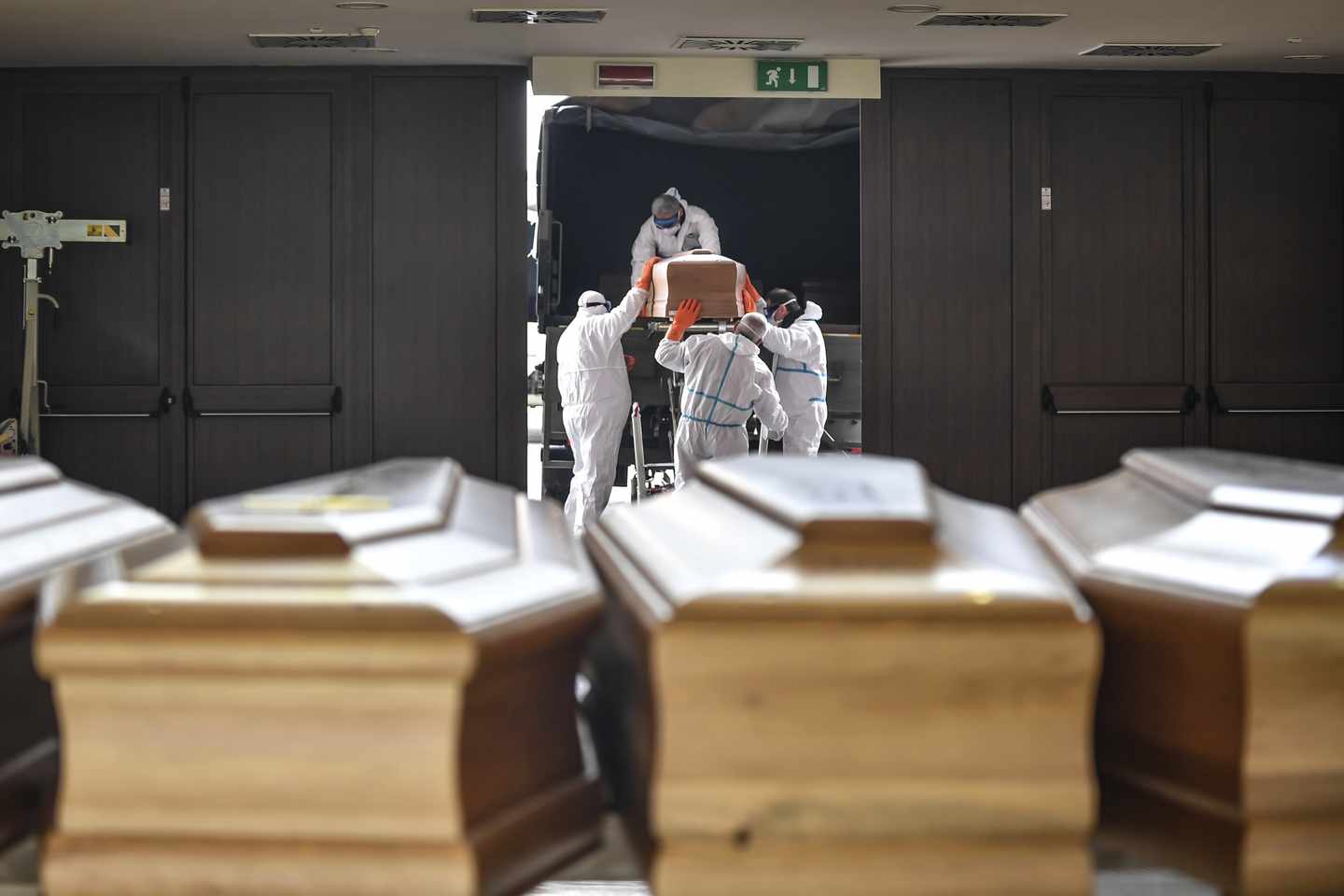Coronavirus is causing working-age people to worry about missing paychecks, caring for kids home from school, stockpiling groceries and canceling plans. But people in their 50s, 60s or older have bigger worries. Many are lying awake wondering if this is how they're going to die.
At its most severe, coronavirus attacks the lungs, making it impossible to breathe without a ventilator. Landing in the hospital on a ventilator is bad. But worse is being told you can't have one. After learning that the state's stockpile of medical equipment had 16,000 fewer ventilators than New Yorkers would need in a severe pandemic, Gov. Andrew Cuomo came to a fork in the road in 2015. He could have chosen to buy more ventilators. Instead, he asked his health commissioner, Howard Zucker to assemble a task force and draft rules for rationing the ventilators they already had.
That task force came up with rules that will be imposed when ventilators run short. Patients assigned a red code will have the highest access, and other patients will be assigned green, yellow or blue (the worst) depending on a "triage officer's" decision. In truth, a death officer. Let's not sugarcoat it. It won't be up to your own doctor.
Cuomo could have purchased the additional 16,000 needed ventilators for $36,000 apiece or a total of $576 million in 2015. It's a lot of money but less than the $750 million he threw away on a boondoggle "Buffalo Billion" solar panel factory. When it comes to state budget priorities, spending half a percent of the budget on ventilators is a no brainer.
Now the pandemic is actually here. Cuomo's grim reaper rules will be applied. New York City's deputy commissioner for disease control Demetre Daskalakis is anticipating "some very serious difficult decisions." So far, in New York City, 1 out of every 4 people with a confirmed case has been hospitalized, and 44% of them have needed a ventilator.
The task force claimed there was no point in buying ventilators because there's also a shortage of doctors and nurses trained to use them. Five years ago, that problem could have been fixed, too. Even now, the National Disaster Medical System can send staff to hot spots like New York.
In Wuhan, China, doctors recently faced the grim arithmetic of 1,000 patients needing ventilators and only 600 available. Italy's rationing ventilators, too. Dr. Daniele Macchini, who practices in Italy, says "every ventilator becomes like gold." Better than gold, if it keeps you alive.
But in New York, rationing ventilators should be unnecessary. The state knew of the shortage, had the money, and should have bought the lifesaving equipment, instead of making a plan on who should live or die.
U.S. manufacturers are making ventilators and filling orders from around the world.
In Italy, the death rate from coronavirus is a staggering 7%, more than double what's occurring in many other countries. That's partly because almost a quarter of Italy's population is over 65 and especially vulnerable. The other reason is that Italy's universal national health system promises free care but delivers stingy care. Italy has only around one-third as many intensive care beds per capita as the United States. Coronavirus patients are being turned away.
Expect the same dire results in the United Kingdom. The British National Health Service allocates about one-fifth as many intensive care beds per capita as American hospitals do. Bernie Sanders, are you watching? What's happening in Italy and the U.K. is proof that single-payer is not the way to go.
Hospitals here in the U.S. will face severe challenges in the coming weeks, including shortages of space, equipment and personnel. But nothing compared with the extreme in Europe's national health systems.
Americans don't want government holding back the very things we need to survive. New York should never again decide to ration lifesaving equipment when it can be bought. That's a lesson learned. Now's not the time for political criticism. Now's the time to get our sanitized hands on ventilators, no matter what.
COPYRIGHT 2020 CREATORS.COM



No comments:
Post a Comment